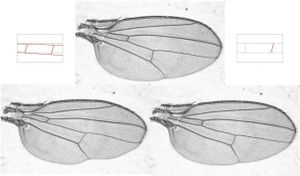Researchers have pioneered the use of functionally aligned nanoparticle-trapped nanopattern arrays (FANTs) to facilitate spatially controlled differentiation of mesenchymal stem cells (MSCs). This method employs triple factor-releasing metal–organic frameworks (MOFs) to deliver key osteogenic differentiation factors, advancing the field of regenerative medicine and drug screening.
Current drug development often relies heavily on animal testing, which raises ethical concerns and falls short due to species-specific responses. Scientists are increasingly turning to innovative in vitro models to simulate human physiology more accurately. This new method reduces reliance on animal models and provides more precise control over stem cell differentiation.
The newly developed FANTs capitalize on nanoscale patterns created through interference lithography, leading to enhanced differentiation efficiency when MSCs are subjected to specific biochemical signals emanated from the MOFs. These frameworks release differentiation factors continuously for up to four weeks, allowing for sustained activation of the signaling pathways necessary for targeted cell differentiation.
The study authors note, "The sustained release patterned array holds potential for constructing advanced therapeutic and disease state in vitro cellular models," highlighting its application for personalized medicine and disease modeling.
Previous research has shown the effectiveness of scaffold-induced stem cell differentiation based on geometric features of substrates. The key here is the simultaneous delivery of physical cues via nanopatterns and biochemical signals from the released factors. "By simultaneously exposing cells to both physical and biochemical cues, we believe stem cell differentiation can be more tightly regulated,” the researchers said.
This novel approach allows for the development of complex multicellular systems analogous to real human tissues, capable of generating diverse cell types on the same substrate. The research showcases how adipogenic and osteogenic differentiation can occur spatially on the same platform, mimicking bone and fat cell architecture.
Data from this study revealed impressive differentiation efficiency, verified by high marker expression and mineralization—significantly greater than traditional methods. MSCs grown on the new platforms produced 26.53-fold greater calcium deposition than controls after four weeks, demonstrating highly selective differentiation with over 98% efficiency. Senior author T.-H. Kim emphasized the importance, stating, "The developed ODF⊂UiO-67-embedded nanoline arrays are suitable for automatic osteogenic differentiation." This efficiency enables the rapid creation of more complex organ structures for drug testing and therapeutic applications.
The broader impact of these findings on biomedical research cannot be understated. By reducing the complexity and reliance on expensive technologies like automated microfluidics commonly used for cellular differentiation, the FANT platform simplifies the process, making it more accessible for various applications, especially where complex integration of different cell types is needed.
The research opens avenues for future innovations, such as incorporating additional factors for even more diversified cellular outcomes, potentially leading to tissue replacements or models for studying diseases like osteoporosis. The integration of both physical and biochemical stimuli from nanostructures promises to push the boundaries of existing biomanufacturing approaches.
Through this groundbreaking technique, the team anticipates advancing the reliability of in vitro models, rendering them more effective for high-throughput drug screening and engineering of functional tissue constructs. This could mark significant progress toward realizing patient-specific stem cell-based therapies, which could revolutionize treatment paradigms and improve patient outcomes.



